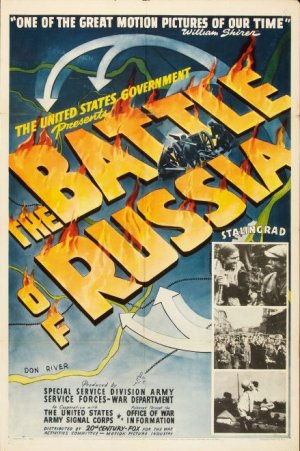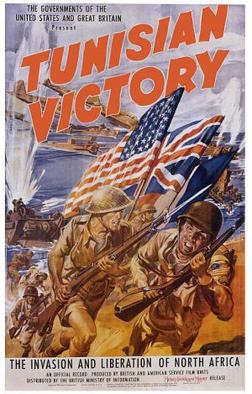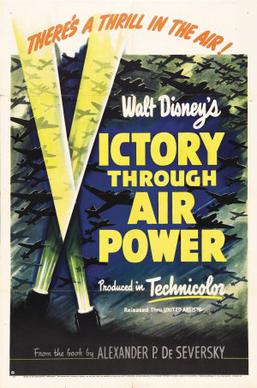Related Research Articles

Why We Fight is a series of seven propaganda films produced by the US Department of War from 1942 to 1945, during World War II. It was originally written for American soldiers to help them understand why the United States was involved in the war, but US President Franklin Roosevelt ordered distribution for public viewing.

Titanic is a 1943 German propaganda film made during World War II in Berlin by Tobis Productions for UFA, depicting the catastrophic sinking of RMS Titanic in 1912. This was the third German language dramatization of the event, following a silent film released in 1912 just four months after the sinking and the British produced German film Atlantik released in 1929.

Walter Wanger was an American film producer active from the 1910s, his career concluding with the turbulent production of Cleopatra, his last film, in 1963. He began at Paramount Pictures in the 1920s and eventually worked at virtually every major studio as either a contract producer or an independent. He also served as President of the Academy of Motion Picture Arts and Sciences from 1939 to October 1941 and from December 1941 to 1945. Strongly influenced by European films, Wanger developed a reputation as an intellectual and a socially conscious movie executive who produced provocative message movies and glittering romantic melodramas. He achieved notoriety when, in 1951, he shot and wounded the agent of his wife, Joan Bennett, because he suspected they were having an affair. He was convicted of the crime and served a four-month sentence, then returned to making movies.

The Battle of Russia (1943) is the fifth film of Frank Capra's Why We Fight documentary series. The longest film of the series, it has two parts. It was made in collaboration with Russian-born Anatole Litvak as primary director under Capra's supervision. Litvak gave the film its "shape and orientation," and the film had seven writers with voice narration by Walter Huston. The score was done by the Russian-born Hollywood composer Dimitri Tiomkin and drew heavily on Tchaikovsky along with traditional Russian folk songs and ballads.

The New Spirit is a 1942 American animated short film produced by Walt Disney Productions and the U.S. Department of the Treasury, and released by the War Activities Committee of the Motion Pictures Industry. The cartoon, which stars Donald Duck, was the first film created as part of Walt Disney's World War II propaganda production. It was commissioned by Henry Morgenthau Jr., then Secretary of the Treasury, to encourage American citizens to pay their income tax in support of the war effort. The film was directed by Wilfred Jackson and Ben Sharpsteen, and features Clarence Nash as the voice of Donald, Fred Shields as the radio announcer, and Cliff Edwards singing the theme song.

Tunisian Victory is a 1944 Anglo-American propaganda film about the victories in the North Africa Campaign.

The True Glory (1945) is a co-production of the US Office of War Information and the British Ministry of Information, documenting the victory on the Western Front, from Normandy to the collapse of the Third Reich.
Black Marketing is an American 1943 dramatic propaganda documentary short produced by the United States Office of War Information and directed by William Castle. It is an educational film warning American civilians against buying unrationed foodstuffs and materials.
A Letter from Bataan is a 1942 "Victory Short" propaganda film made by Paramount Pictures in collaboration with the U.S. Office of War Information and the United States Government. It was directed by William H. Pine, produced by William C. Thomas and written by Maxwell Shane. It had music by Daniele Amfitheatrof and the cinematography was by Fred Jackman Jr.

Desert Victory is a 1943 film produced by the British Ministry of Information, documenting the Allies' North African campaign against Field Marshal Erwin Rommel and the Afrika Korps. This documentary traces the struggle between General Erwin Rommel and Field Marshal Bernard Montgomery, from German and Italian defeats at El Alamein to Tripoli. The film was produced by David MacDonald and directed by Roy Boulting who also directed Tunisian Victory and Burma Victory. Like the famous "Why We Fight" series of films by Frank Capra, Desert Victory relies heavily on captured German newsreel footage. Many of the most famous sequences in the film have been excerpted and appear with frequency in History Channel and A&E productions. The film won a special Oscar in 1943 and the 1951 film The Desert Fox: The Story of Rommel took sections of the film for its battle footage.
Between 1941 and 1945, during World War II, Walt Disney and his company were involved in the production of propaganda films for the U.S. government. The widespread familiarity of Disney's productions benefited the U.S. government in producing pro-American war propaganda in an effort to increase support for the war.

Beyond the Line of Duty is a 1942 American short propaganda film, directed by Lewis Seiler. The documentary film reenacted the life and career of United States Army Air Corps Captain Hewitt T. "Shorty" Wheless.

The musical short can be traced back to the earliest days of sound films.

Aerial Gunner is a 1943 American black-and-white World War II propaganda film produced by William C. Thomas and William H. Pine, who also directed. The film stars Chester Morris, Richard Arlen, and Jimmy Lydon. This was the first feature film directed by Pine, who produced other films through his company, Pine-Thomas Productions. Aerial Gunner was distributed by Paramount Pictures.

Victory Through Air Power is an American animated documentary propaganda film produced by Walt Disney Productions and released by United Artists on July 17, 1943. It is based on the 1942 book Victory Through Air Power by Alexander P. de Seversky. De Seversky appeared in the film, an unusual departure from the Disney animated feature films of the time.

The Grain That Built a Hemisphere is a 1943 short animated propaganda film about corn produced by Walt Disney for the Office of the Coordinator of Inter-American Affairs. It was nominated for an Academy Award for Best Documentary in 1943.
A Ship Is Born is a 1942 short WWII propaganda film produced by Warner Bros. about the U.S. Merchant Marine. It was nominated for an Academy Award for Best Documentary Feature in 1943.
Africa, Prelude to Victory is a short dramatic propaganda film produced as part of the newsreel The March of Time. It shows the African campaigns of World War II. It was nominated for an Academy Award for Best Documentary Feature in 1943.

Five Came Back is an American documentary based on the 2014 book Five Came Back: A Story of Hollywood and the Second World War by journalist Mark Harris. It was released as a stand-alone documentary in New York and Los Angeles, and as a three-part series on Netflix, on March 31, 2017.
References
- ↑ https://www.imdb.com/event/ev0000003/1943 Awards for 1943 [ user-generated source ]